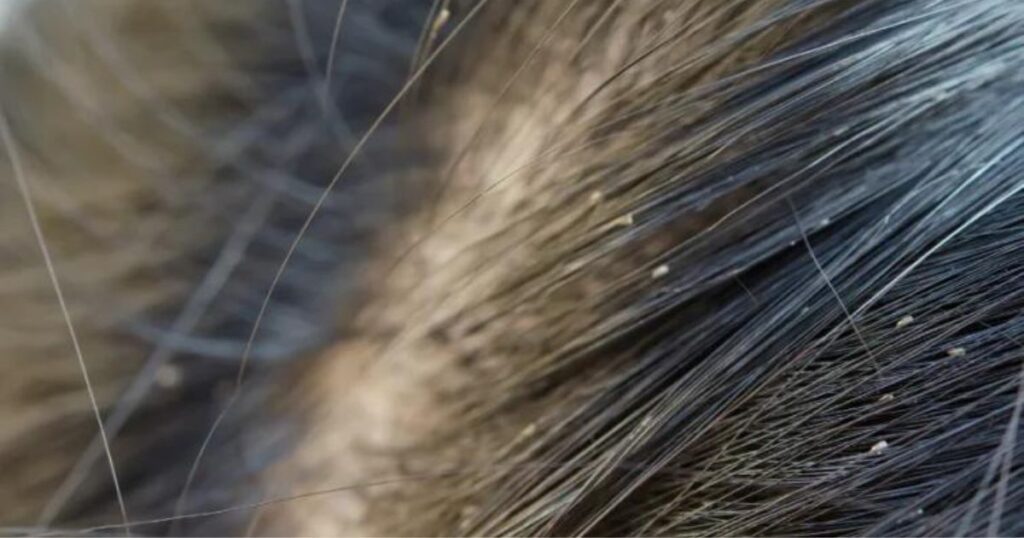When we think of lice, our minds often leap to the common childhood ailment of head lice, leading to itchy scalps and the need for meticulous combing. However, whether our canine friends can suffer from similar pests is less frequently discussed. Surprisingly to many, dogs can indeed become hosts to their own species-specific lice. These tiny parasites can cause significant discomfort and health issues for our pets.
This blog post delves into the question of “can dogs get lice?”, exploring how these creatures differ from their human counterparts, the risks they present, and the measures pet owners can take to prevent and treat infestations. Our aim is to provide a comprehensive understanding of dog lice, equipping dog owners with the knowledge they need to keep their pets healthy and happy.
Can Animals Get Lice? Is Lice Different for Every Animal?
Can dogs get lice from humans? Many pet owners wonder about the possibility of their animals contracting lice from humans and whether different animals host different types of lice. While animals can indeed get lice, the species affecting them are distinct from human head lice.
This means you don’t have to worry about catching lice from your pets or vice versa. Each type of lice is specifically adapted to its host, relying on unique diets and attachment methods that are suitable for their specific animal.
These adaptations prevent lice from surviving on species other than their intended hosts, ensuring that your furry friend isn’t responsible for any lice infestations you might encounter.

Why Lice Differs for Every Animal
The divergence of lice across animal species stems from their evolutionary path. All throughout history, lice have co-evolved with their hosts, acquiring unique traits that enable their survival in specific environments. These include physical adaptations like the design of their claws to grip the particular hair or feathers of their host and reproductive strategies synced with their host’s lifecycle for optimal proliferation.
For instance, bird lice have claws suited for gripping feathers, whereas mammalian lice’s claws allow navigation through fur or hair. Furthermore, the dietary requirements of lice can vary based on their host, ranging from blood-feeding to consuming skin oils or dead skin cells.
This host-specificity extends to their lifecycle and behaviors, with some lice laying eggs directly on the host’s hair shafts or feathers, using a special adhesive for strong attachment. Others may adopt behaviors that help evade detection by their host’s grooming habits.
The specificity of lice has significant implications for the treatment and prevention of infestations. It means lice infestations in one species pose no direct risk to another. For example, dog lice cannot survive on humans, and vice versa. However, lice can quickly spread among individuals of the same species through direct contact or the sharing of bedding and grooming tools.
Recognizing the unique characteristics of lice across different species is vital for managing and preventing infestations effectively. It informs the development of targeted treatments and preventive measures that are specific to the type of lice and the host they infest. For pet owners, acknowledging that their animals can be affected by lice, identifying the lice type, and applying appropriate treatments are crucial for ensuring their pets’ health and comfort.

Why Head Lice on Dogs Would Be a Concern
Head lice in dogs, while distinct from human head lice, present significant health concerns for pets, including intense itching and discomfort that leads to excessive scratching. Such behavior can cause skin irritation, open wounds, and potential secondary infections. Moreover, severe infestations may lead to anemia in puppies or weakened dogs, highlighting the importance of promptly recognizing and addressing lice infestations to maintain a dog’s health and well-being.
So, Can Dogs Get Lice?
Indeed, dogs can get lice. Lice that infest dogs are specifically adapted to canines, differentiating them from lice that infest humans. Understanding dog lice is crucial for your pet’s well-being, encompassing two main types:
- Chewing Lice (Trichodectes canis): These lice feed on skin debris and sebaceous secretions, causing irritation and discomfort.
- Sucking Lice (Linognathus setosus): In contrast, sucking lice feed on the dog’s blood, potentially leading to anemia in severe cases, especially among young, elderly, or immunocompromised dogs.
Dogs contract lice through direct contact with infested animals or contaminated environments. Although not as common as other parasites like fleas and ticks, lice can still cause significant discomfort and health issues. Regular grooming, maintaining good hygiene, and seeking prompt veterinary care when infestation is suspected are key to managing and preventing lice in dogs.
What Are Dog Lice?
Dog lice are tiny, wingless insects living on dogs’ skin and fur, causing symptoms such as itching, hair loss, and skin irritation. Identifying and treating dog lice are essential steps in keeping your pet healthy and comfortable.

What Are the Differences Between Human Head Lice and Dog Lice?
The key to effective lice management lies in recognizing the differences between human head lice and the lice that infest dogs. Human lice are specialized parasites, thriving on the warmth and environment of the human scalp, feeding exclusively on human blood, and laying their eggs on hair shafts close to the skin.
In contrast, dog lice have evolved to survive on canines, with distinct species targeting either the dog’s skin or blood for nourishment. These parasites are adapted to the dog’s fur and skin conditions, making cross-infestation between humans and dogs highly unlikely.
Why Human Head Lice Can’t Be Transferred to Dogs
The primary reason human head lice cannot transfer to dogs (and vice versa) is their host specificity. Each lice species has evolved to thrive on a particular host, making cross-species survival nearly impossible. This specificity encompasses factors such as body temperature and the characteristics of the host’s skin, fur, or hair.
Species/Types/Differences of Lice for Dogs vs Humans
- Species/Types: Human head lice (Pediculus humanus capitis) are adapted to living on humans, feeding on blood, and attaching eggs to human hair. Conversely, dog lice include Trichodectes canis (chewing louse) and Linognathus setosus (sucking louse), each specially adapted to dogs’ fur and skin conditions.
- Habitat Preferences: While human lice prefer the moist environment of the scalp, dog lice thrive in conditions provided by a dog’s fur and skin. The texture, density, and pH of dog fur create an optimal environment for dog lice that is inhospitable to human head lice.
- Reproductive Behaviors: Human head lice lay eggs close to the scalp for ideal hatching conditions. In contrast, dog lice may lay eggs on dog hair, with preferences for specific body areas varying by lice type.
Symptoms of Lice on Dogs vs Human Head Lice
- Symptoms in Dogs: Lice infestations can cause severe itching, scratching, hair loss, skin redness, and potential secondary infections in dogs. Anemia may also occur in severe cases.
- Symptoms in Humans: Human head lice primarily cause scalp itching, leading to scratching and potential secondary bacterial infections. Visible nits and live lice on the scalp are common indicators.
The stark differences between human head lice and dog lice underscore the need for species-specific approaches to prevention and treatment. Understanding these distinctions equips pet owners to effectively address and manage lice infestations, ensuring the health and comfort of both pets and their human family members.
What Do You Do If Your Dog Has Lice?
If your dog has lice, consulting a veterinarian for diagnosis and treatment is crucial. Options may include medicated shampoos, spot-on treatments, and thorough cleaning of your dog’s environment to eliminate lice and their eggs. Once treated, it is always important to educate yourself on head lice prevention strategies to reduce any future risks of infestation.
Treatments If a Dog Gets Lice
Effective treatments for dog lice include:
- Medicated shampoos and sprays to kill lice.
- Prescription medications from a veterinarian.
- Regular grooming and combing to remove lice and nits.
- Cleaning and disinfecting bedding, grooming tools, and the dog’s living space.
Contact A Lice Clinic For Your Lice Needs
Understanding the differences between pet lice and human lice not only alleviates concerns but also highlights the importance of specialized treatment for each. While it’s reassuring to know that humans cannot contract lice from their pets, it’s equally crucial to address human lice infestations with promptness and precision. The Lice Clinics specializes in providing safe, effective, and fast screening and treatment options for human lice, utilizing the latest technology and methods to ensure your family remains lice-free.
If you or someone in your family is dealing with a lice outbreak, don’t let it disrupt your life. Reach out to The Lice Clinics for expert care and support. Trust us to restore your peace of mind with our professional lice treatment services.







